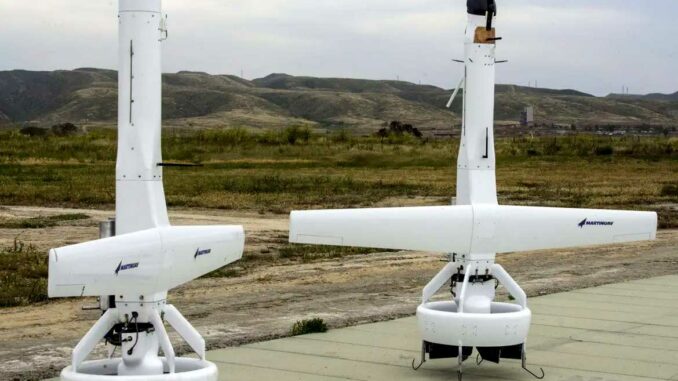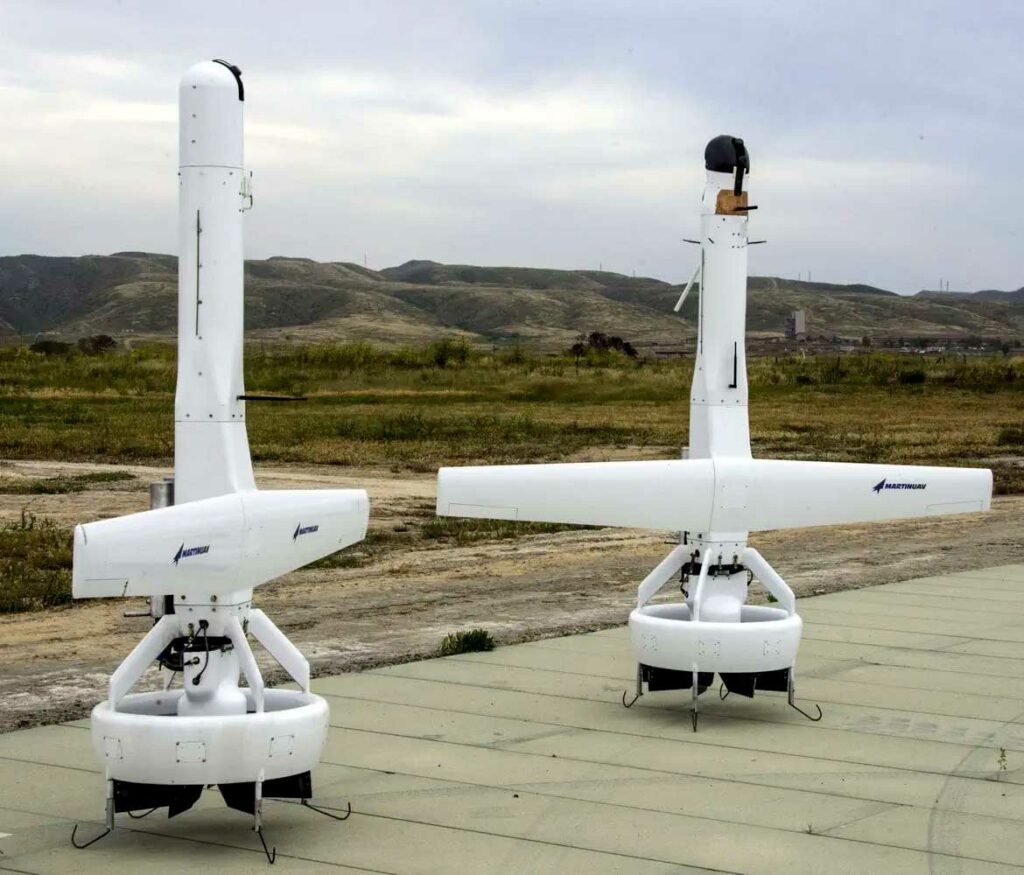
Shield AI’s V-BAT, tested in combat in Ukraine, enters service in Greece, marking an important step in the modernization of its armed forces.
The V-BAT drone, designed by Shield AI, has been officially integrated into the Greek armed forces following its operational performance in Ukraine. Capable of vertical takeoff and landing, it combines long-range autonomy, stealth, and precise reconnaissance capabilities. Ukrainian forces have used it successfully to identify Russian air defense systems and gather intelligence on enemy movements. Greece, which is in the midst of transforming its military, intends to rely on this technology to improve its maritime and territorial surveillance. This choice reflects a turning point in the acquisition of autonomous aerial systems, which are less expensive and more adaptable to complex environments.

A strategic acquisition for Greek defense
Greece officially received its first V-BAT system on May 14, 2025. This decision is part of an intensive modernization of the Greek armed forces, announced by Prime Minister Kyriakos Mitsotakis as the most significant military reorganization since the founding of the modern Greek state.
The V-BAT system was handed over to the ASDEN (Supreme Military Command of the Interior and Islands) by the Athanasios C. Laskaridis Foundation, a civilian organization increasingly involved in providing material support to the Greek army. This delivery is part of a public-private partnership policy, enabling Greece to strengthen its capabilities without relying exclusively on public funds.
Shield AI, the US company behind the V-BAT, is now positioning itself as a strategic partner for European countries seeking high-performance tactical drones. The V-BAT is not a conventional observation drone. It stands out for its ability to carry out long missions in areas poorly served by traditional military infrastructure, such as the Aegean islands and mountainous inland areas.
From an operational standpoint, the integration of the V-BAT strengthens Greek territorial resilience in a strategic area marked by tensions in the Aegean Sea and the eastern Mediterranean. The drone will be able to carry out maritime border surveillance missions, detect suspicious naval movements, and assess Turkish military activities, with zero human risk.
A platform proven in combat in Ukraine
The operational legitimacy of the V-BAT is based on its results in Ukraine in 2024. The first documented case concerns a mission carried out on August 24, 2024 by Ukrainian special forces. The drone penetrated more than 60 kilometers into occupied territory, identifying a Russian Buk surface-to-air missile system, which was subsequently destroyed by a HIMARS missile guided by data from the drone.
The total flight time exceeded six hours, demonstrating not only the system’s strategic range, but also its ability to transmit actionable data in real time. These long missions give the V-BAT a tactical advantage over drones with limited autonomy or complex takeoff constraints.
Another example: on November 19, 2024, a V-BAT took part in a Ukrainian naval reconnaissance mission near the Kinburn Spit, northwest of the Black Sea. It gathered information on Russian logistical movements before returning to its base in the Odessa region, confirming its robustness in coastal and maritime environments.
In total, more than 130 missions have been carried out in Ukraine with this drone. This data attests to the reliability of the V-BAT in an active theater of war, even when faced with hostile jamming or detection systems.
An agile and economical tactical drone
The V-BAT stands out for its innovative design: it is a single-rotor vertical take-off and landing (VTOL) drone. It can be deployed without a runway, in a small area (even on a roof or a ship). It has a range of over 100 kilometers and an endurance of more than 6 hours. It can fly at cruise speeds of close to 140 km/h and carry modular payloads such as EO/IR sensors, communication relays, or mapping devices.
This configuration makes it particularly suitable for missions in enclosed areas, such as the Greek islands in the Aegean Sea or outposts in mountainous areas. Unlike fixed-wing or multirotor drones, it requires no catapult or recovery system. This logistical simplicity significantly reduces operating costs.
The estimated price of a complete V-BAT system, including the drone, ground stations, and maintenance, is around $3 million, well below the cost of a MALE (Medium Altitude Long Endurance) drone such as the MQ-9 Reaper, which exceeds $20 million per unit.

A signal towards a more offensive drone doctrine
With the integration of V-BAT, Greece joins other European nations that are developing a policy for the autonomous use of tactical drones. This choice is part of a growing trend toward lightweight, economical, and redeployable systems.
The case of Ukraine also shows that drones such as the V-BAT can be integrated into a broader strike chain: detection, transmission of coordinates, neutralization by guided missiles. This is a break with the passive role often assigned to observation drones.
By creating specialized units such as the Ukrainian Unmanned Systems Forces (USF), modern armies are building autonomous tactical expertise that is essential in a hybrid warfare context. Greece could follow suit, notably by deploying V-BATs to coordinate its naval, land, and airborne missions in the Mediterranean.
The integration of the V-BAT also opens up prospects for industrial and doctrinal cooperation with the United States, particularly through pilot training, exchanges of operational feedback, and even future licensed production or integration into joint NATO exercises.
Towards a European drone?
Greece’s choice of an American system such as the V-BAT nevertheless raises the question of European industrial autonomy. The European Union, through its EDIDP and PESCO programs, is attempting to develop indigenous solutions such as the Eurodrone and lighter tactical drones, but is suffering from structural delays, high costs, and a lack of standardization among member states.
Faced with pressing operational needs and tight budgets, countries such as Greece are turning to proven American solutions. This phenomenon raises the question of technological dependence in a strategic field where responsiveness, cost, and NATO interoperability often take precedence over continental industrial priorities.
The delivery of the V-BAT to Greece, although a one-off, reveals the growing gap between European ambitions and the reality of immediate needs on the ground.
War Wings Daily is an independant magazine.